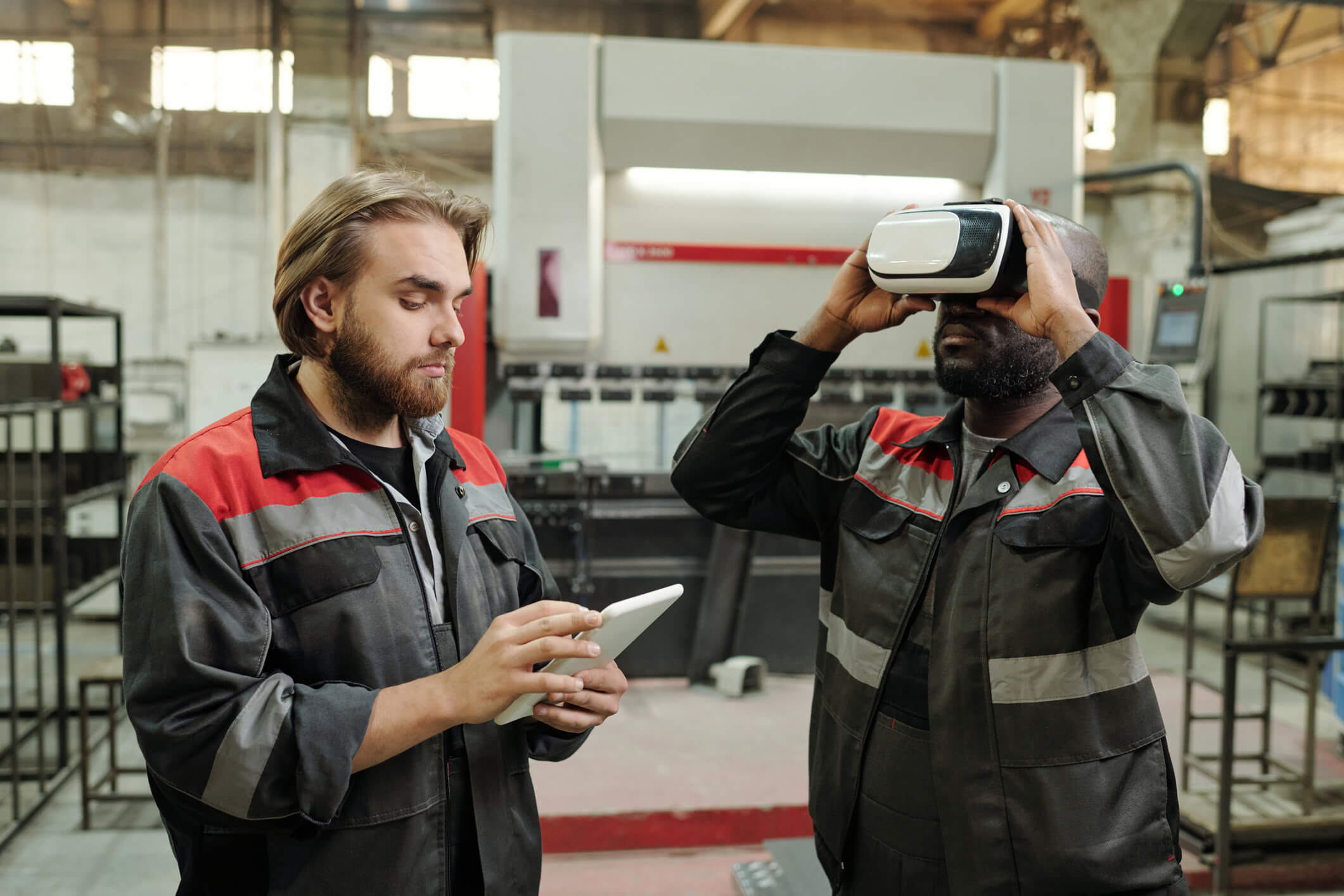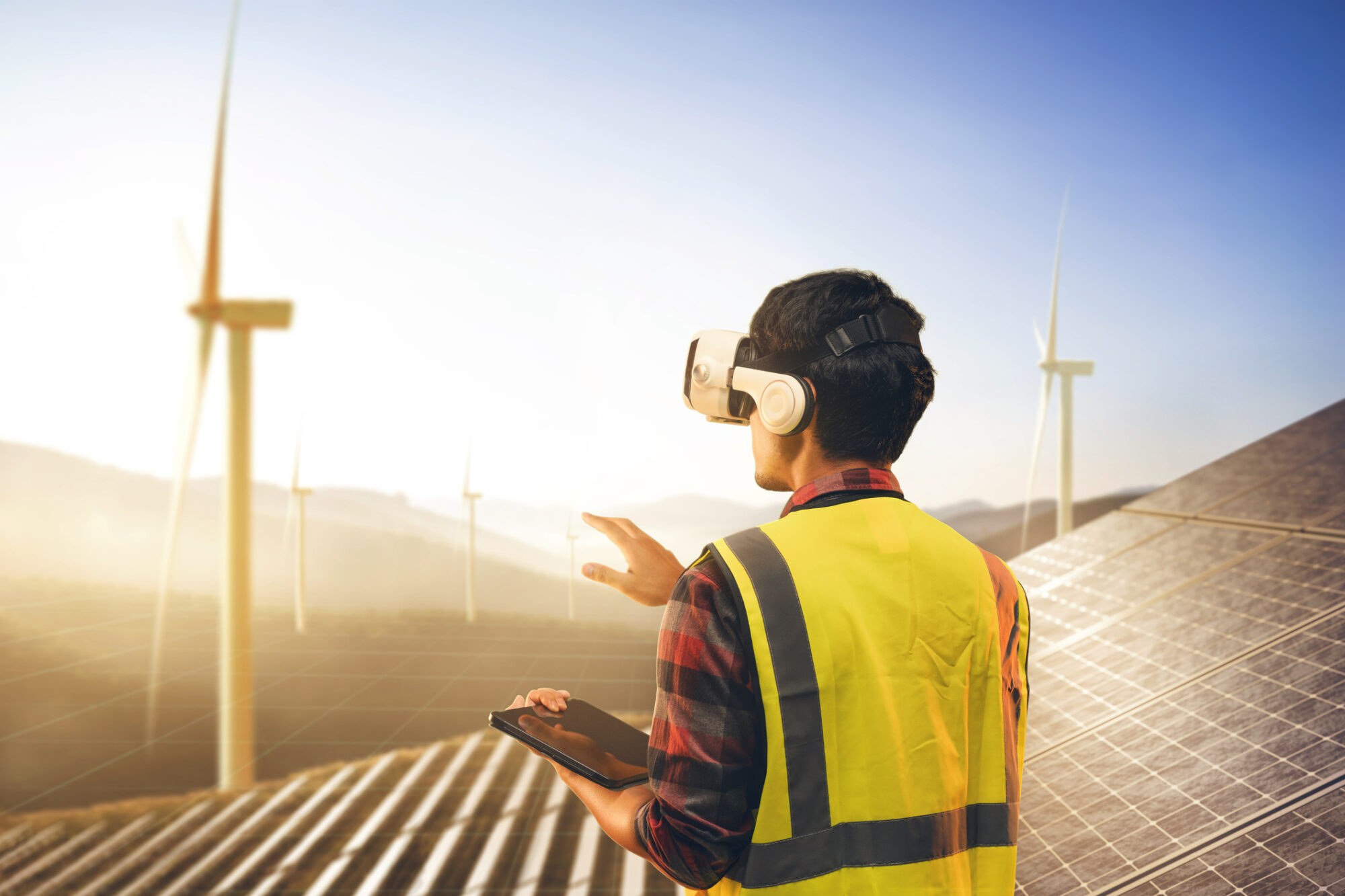Today’s utility workforce faces many constraints that impact important grid modernization initiatives and critical power operations. Developing a new generation of skilled engineers and technicians is vital to maintaining reliability and resiliency for the future. Expediting the pace at which we train technicians and engineers entering the industry requires organizations to adopt new approaches to training and development. Leveraging new tools and technologies such as mixed and virtual reality (MR/VR) cannot be overlooked as a unique opportunity to support and train employees and improve project success.
Immersive learning technology includes advanced augmented reality (AR), virtual Reality (VR) and mixed reality (MR) tools that are used to create highly interactive learning experiences. Instructional programs adopt advanced technology to increase the authenticity of the training by simulating job tasks and/or facilitating virtual interaction between the learner and a technical expert. It enables users to interact with and perceive both digital content (e.g., one-line diagrams, procedural documents, safety checklists, etc.) and physical objects simultaneously, enhancing the overall user experience.

Drivers for MR/VR in the Utility Industry
By 2030, it is estimated that 40 percent of the current utility workforce will reach retirement age. At the same time, the current pace of grid investments will require 20 percent more employees than today to tackle projects successfully. And there is no doubt a shortage of qualified, skilled replacement candidates that can be hired right away to fill the gap. On average, it takes 5-10 years to fully train a principal engineer using conventional learning and development methods. That’s a long road toward gaining fully qualified leaders with deep system expertise who can provide high-quality, predictable service levels across an increasingly diverse range of disciplines and technologies that utilities need now.
Additionally, stress on human beings is greater than it ever has been and is increasing by the day. Workers are inundated with tremendous amounts of information, especially utility staff who must grapple continually with complex change, on all fronts – regulatory, technological and procedural- impacting how they do their jobs day in and day out. With so much on our minds, coupled with a growing skills and experience gap, field staff can be challenged to make sense of complex work in a split second in time. Many incidents and accidents utility workers experience result from pressure to complete the task in a timely manner not allotting for time to think through all the steps, especially during outages, or a lack of training and experience.
Benefits and Use Cases for MR/VR in Power Workforce Development
In the current utility workforce environment, establishing an MR/VR training and field support program can be a game changer. Digital MR/VR tools have a critical role to play in bridging the workforce generation gap, enabling remote collaboration, improving safety and providing immersive learning and working experiences to attract the next generation of power engineers. By leveraging MR/VR, utility companies can retain institutional knowledge, maintain operational excellence and build a dedicated, skilled team capable of supporting the complex grid projects demanded today.
Reduce Training Time: Skill acquisition (e.g., relay testing, climbing a utility pole, etc.) for complex tasks takes significant time because it requires the learner to practice, receive feedback and adjust their approach in order to become fully qualified. Traditional training methods require substantial theoretical (instructor-led, web based) and on-the-job training to get a junior technician to the point where they can work independently. MR/VR technologies allow us to create high-fidelity simulations that maximize learner feedback through repetition and heightened emotional responses (e.g., equipment failure, arc flashes). A recent study found that AR-based training reduced new hire training for entry level utility technicians by 50%.
Increase the ROI for Training Programs: Not only can organizations significantly reduce the amount of time it takes to qualify technicians and engineers, but the costs associated with training programs can be decreased significantly by strategically leveraging immersive technology. A recent study at Duke found that courses that integrated immersive technology modules as compared to instructor-led could lead to annual savings of over $500,000, quickly offsetting initial costs associated with purchasing the required hardware and software.
Bridge the Generation Gap and Increase Knowledge Transfer: The utility industry currently faces a significant generational gap between older, experienced workers and the incoming, more tech-savvy generation. Immersive learning tools can be a strong bridge between newer engineers working in the field to the seasoned subject matter experts in the office. It can build a common ground and common approach for communication and knowledge exchange. MR/VR programs enable more experienced staff to effectively transfer their expertise to the younger generation through immersive simulations, virtual training modules and remote assistance.
Remote assistance with MR/VR requires the field employee to put on glasses or a headset and be focused on seeing and solving the problem at hand. It allows human brains to work the way they naturally do. And having a remote expert sitting on a field tech’s shoulder to help guide through complex work steps, processes, documentation and systems minimizes mistakes and incidents, reinforces training and improves confidence to support workforce retention and job satisfaction.
Facilitate Remote Mentoring: Immersive learning tools enable remote collaboration and mentoring, which is especially crucial in an industry that spans wide geographical areas. Experienced workers can connect with a newly developing workforce through virtual environments, providing guidance and support in real-time. This remote collaboration reduces the need for extensive travel and enables efficient knowledge transfer regardless of physical location.
Improve Safety and Risk Mitigation: MR/VR tools can play a crucial role in ensuring the safety of a less experienced or less exposed workforce by simulating hazardous situations and providing realistic safety training. Through immersive experiences, they can learn about potential risks and practice appropriate safety protocols, reducing the likelihood of accidents and injuries.
Using AR tools that support technicians in the field not only minimizes mistakes that can cause outages or harm human safety, but they improve project and operational efficiency as well. MR/VR programs expedite problem solving and timed responses to issues. Rather than sending a more senior or experienced person out into the field to understand what the issue might be, you can get an expert there virtually with no travel costs and no time lost on productivity. A remote, hands-on review of the issue encountered can give leadership an opportunity to do deeper research and get a greater understanding of the problem to match the best solution to the issue. Getting connected with someone in the field who has been trained in AR/VR accelerates the time to respond and more effectively and efficiently troubleshoots to keep projects on track and people safe.

Embrace The Shift
Partner With TRC’s Tested Practitioners




